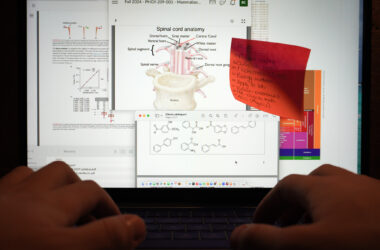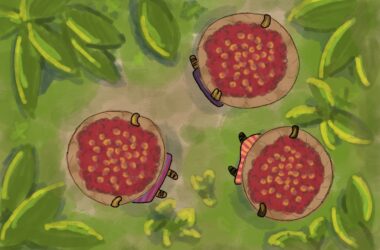“Let’s get back to normal” was a phrase that circulated the globe at the height of the coronavirus (COVID-19) pandemic. To some, getting vaccinated to accelerate a return to normalcy was a no-brainer, but others felt various degrees of hesitation. Still, experts estimate that the COVID-19 vaccine prevented nearly 19.8[Read More…]
Science & Technology
The latest in science and technology.
Are you feeling burned out with your STEM degree?
University students studying science, technology, engineering, and mathematics (STEM) tend to lose motivation over time, largely due to daunting coursework and competitive environments. This loss of motivation can be detrimental to students’ pursuit of careers and further studies in STEM fields, not to mention their mental health. A detailed understanding[Read More…]
Innovative approaches to modelling small-scale, Indigenous agriculture in Guatemala
Creating robust statistical models to predict crop yields, food security, and malnutrition is crucial for determining the next steps for governments, community leaders, and farmers—all of whom are stakeholders in the fight for sustainable and reliable access to food. Developing these models typically relies on detailed, long-term data, which allow[Read More…]
Finding sonic serenity in the big city
Imagine strolling through the bustling streets of downtown Montreal, where the air is thick with the rumble of traffic and the screeching of construction. It’s not exactly the most relaxing experience, is it? Could urban planners transform these soundscapes into something more pleasant? Valérian Fraisse, a PhD student in Music[Read More…]
Mindfulness: A potential solution for depression and anxiety in seniors
In Canada, up to 20 per cent of older adults experience symptoms of depression, and these rates increase to up to 40 per cent for those in hospitals and long-term care homes. Depression and anxiety disproportionately affect older adults and are associated with adverse health outcomes, reduced quality of life,[Read More…]
Peaking into the brains of bilingual students
As Quebec tightens regulations around student eligibility for education in English or other languages, the proportion of anglophone and allophone students—those whose home language is neither English nor French—attending French schools in the province has shot up. According to recent data from the Office québécois de la langue française (OQLF),[Read More…]
Think your partner is anxious-avoidant? Think again.
With pop psychology invading every social media platform, the line between self-help and self-sabotage has never been so thin. Pop psychology refers to psychological theories, strategies, or concepts popularized through the media—particularly social media. From attachment style assessments that can make or break your dating life to the allure of[Read More…]
High and dry: How does drying affect weed quality?
While many students spend their day surrounded by cannabis, not all of them can claim that it’s “for research purposes.” For some bioengineering researchers, though, this is their reality. With cannabis slowly rising in popularity among Canadians, research in the field is more relevant than ever. In a recent publication[Read More…]
How does sign language impact deaf children’s ability to learn spoken language?
An infant’s first three years of life are their most intensive period for acquiring language. At this stage, parents often speak to their children to stimulate language development and avoid communication challenges later on for their infant. However, this period can be difficult to navigate for speaking parents of deaf[Read More…]
Exploring Montreal’s bilingual identity
Living in a vibrant and multicultural city such as Montreal exposes us to a variety of languages each day. Montreal’s linguistic mélange encourages us to consider how these different languages impact our perception of one another’s languages, and the key factors in this process. In a study conducted in Montreal,[Read More…]













